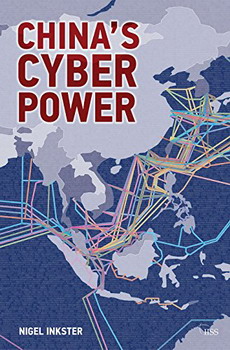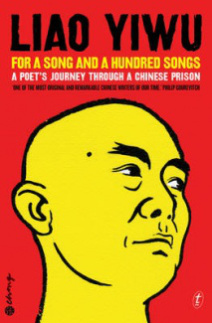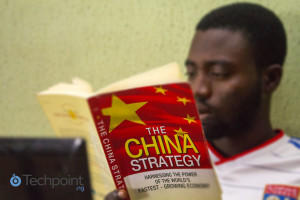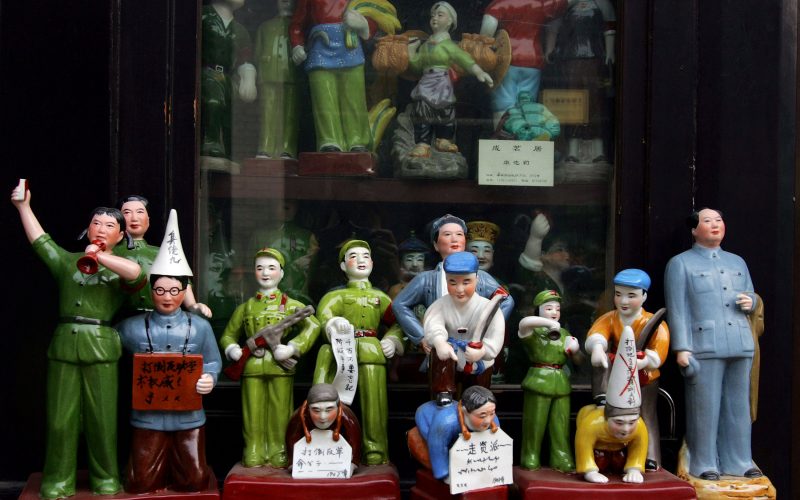 The cyber domain has become central to the struggle for strategic advantage between the US and the West on the one hand, and China and other authoritarian states on the other.
The cyber domain has become central to the struggle for strategic advantage between the US and the West on the one hand, and China and other authoritarian states on the other.
If there is any outsider, who can present a coherent view of China’s rise as a cyber power, it is the author of this short book. Nigel Inkster was the deputy chief of the UK’s Secret Intelligence Service, MI6, speaks Mandarain, is well versed in the country’s history and seems to show a good understanding of the psyche of Beijing’s leadership and its options. He is currently the Director of Future Conflict and Cyber Security at the International Institute for Strategic Studies in London.
Informing China’s stance is the Soviet era doctrine of information warfare as a tool to ensure internal political control and a favourable external narrative. The US, of course, has its own cyber war capacity, and its efficacy may have been damaged by Edward Snowden, who blew the whistle on the US’s extensive snooping programme. Where the West and the East importantly differ is the degree of liberty they are willing to tolerate in the cybersphere.
China’s Cyber Power argues that state control of the cyber domain is a critical factor in China’s pursuit of military strength and protection from internal and external threats. “What the leadership fear most of all is the prospect of an irrecoverable breakdown in internal order,” writes Inkster.
“There are signs that the Party’s ideologues may be developing a vision for the Chinese cyber domain that enables it to exercise control over citizens by both filtering the information they access and compiling such detailed electronic data on individuals – including their entire browsing history and all their social-media posts – that any perceived infractions can be used as leverage against them,” he writes.
“For now, China appears to believe that it can have its cake and eat it: gaining the economic benefits that come from with global connectivity while excluding information as seen as detrimental to political and social stability,” Inkster writes.
On the external front, Inkster believes that the Chinese are heavily engaged in cyber espionage as a means of dulling the West’s technological edge. In the wake of an agreement between President Barack Obama and Chinese President Xi Jinping, Chinese efforts to cyber-steal American intellectual property and business secrets seem to be declining. But the international fault lines on cyber issues remain clear, as does cyber’s pivotal role in future armed conflicts.
In 2000, then US President Bill Clinton likened Chinese efforts to censor what was on the web to trying to “nail Jell-O to the wall.” Beijing’s approach is nuanced as the authorities often refrain from censoring criticisms of the leadership, but do crack down on attempts to mobilize unauthorized public protest. The Chinese now live in what could be called a parallel web universe, overseen by a complex and multilayered monitoring and control system. This might strengthen the authoritarians’ hold on power, although Inkster concludes, “it will be some time before any safe conclusions can be reached about this experiment.”
The recent example of Zimbabwe shows how the cat and mouse game is playing out in an African country. Robert Mugabe’s regime is presently facing a challenge from Pastor Evan Mawarire’s #This Flag, a protest movement that makes extensive use of the internet and social media.
Shutting down the internet was probably considered too draconian, especially since opponents were likely to see it as sign of panic. When warnings about “misuse” of social media proved ineffective, says TechZim.co.zw, a Zimbabwean information technology site, the government opted instead to force Zimbabwe’s three mobile network operators to suspend sales of cheap data bundles. Eliminating special mobile data promotion bundles is the ultimate squeeze on protest, TechZim suggests.
Was Mugabe’s government advised by the Chinese? Inkster believes that a large number of African countries may find the Chinese model of internet control attractive. China’s large footprint in Africa allows it to influence cyber policies through diplomatic pressure and help in telecommunications network development, he says. Chinese telecommunications giants Huawei and ZTE have built major systems in around 30 African countries. Huawei has established training centres in seven African states, a research and development facility in South Africa, and a network operations base in Cairo. Human Rights Watch has criticised both companies for providing equipment used to conduct political surveillance.
“China may exploit its control of African telecommunications infrastructure for intelligence-gathering purposes,” writes Inkster. “There is no hard evidence to support this proposition, but it would scarcely be surprising if China were engaged in such activities, whether independently or in conjunction with the states concerned.”
“Chinese engagement appears to have been translated into political support for some of Beijing’s policies, a notable example being the 2015 cyber-security pact between the Chinese and South African governments, which made reference to collaboration on information security,” he says.
In July 2016 South Africa, along with others, supported China by voting against a UN resolution that would have required states to commit themselves to a policy of non-interference with the flow of online information. This diplomatic victory could be a sign that Beijing is winning the cyber Cold War in Africa.
For the public, communications can be hidden from prying eyes through encrypted services such as WhatsApp, the use of Virtual Private Networks, which can camouflage internet addresses, and Tor, software that can hide the source of internet traffic. These devices are certainly sufficient to force prying eyes to work a lot harder.
Publisher: Routledge, Taylor and Francis Group, for The International Institute for Strategic Studies (30 May 2016)
ISBN 978-1-138-21116-2
Softcover: 123 pages
A Kindle edition is also available
Source: http://www.defenceweb.co.za/index.php?option=com_content&view=article&id=44668:book-review-chinas-cyber-power&catid=57:Book%20Reviews&Itemid=141

 It’s not easy to read a prison memoir like this one: For a Song and a Hundred Songs, A Poet’s Journey through a Chinese Prison by Liao Yiwu is a confronting book and it took me a while to get through it. It’s a bit like reading Aleksandr Solzhenitsyn’s One Day in the Life of Ivan Denisovich – one can’t just scamper through it, because each chapter is a catalyst for all kinds of reflections about the power of the state …
It’s not easy to read a prison memoir like this one: For a Song and a Hundred Songs, A Poet’s Journey through a Chinese Prison by Liao Yiwu is a confronting book and it took me a while to get through it. It’s a bit like reading Aleksandr Solzhenitsyn’s One Day in the Life of Ivan Denisovich – one can’t just scamper through it, because each chapter is a catalyst for all kinds of reflections about the power of the state …  In his book “The China Strategy”, Edward Tse shared his years of experience as a consultant to a lot of companies outside of China that he helped build their businesses in China. The 247 page book isn’t a long read as most people would think. Edward carefully touched on the key areas that has formed the China Strategy that we know today.
In his book “The China Strategy”, Edward Tse shared his years of experience as a consultant to a lot of companies outside of China that he helped build their businesses in China. The 247 page book isn’t a long read as most people would think. Edward carefully touched on the key areas that has formed the China Strategy that we know today.  The cyber domain has become central to the struggle for strategic advantage between the US and the West on the one hand, and China and other authoritarian states on the other.
The cyber domain has become central to the struggle for strategic advantage between the US and the West on the one hand, and China and other authoritarian states on the other.
